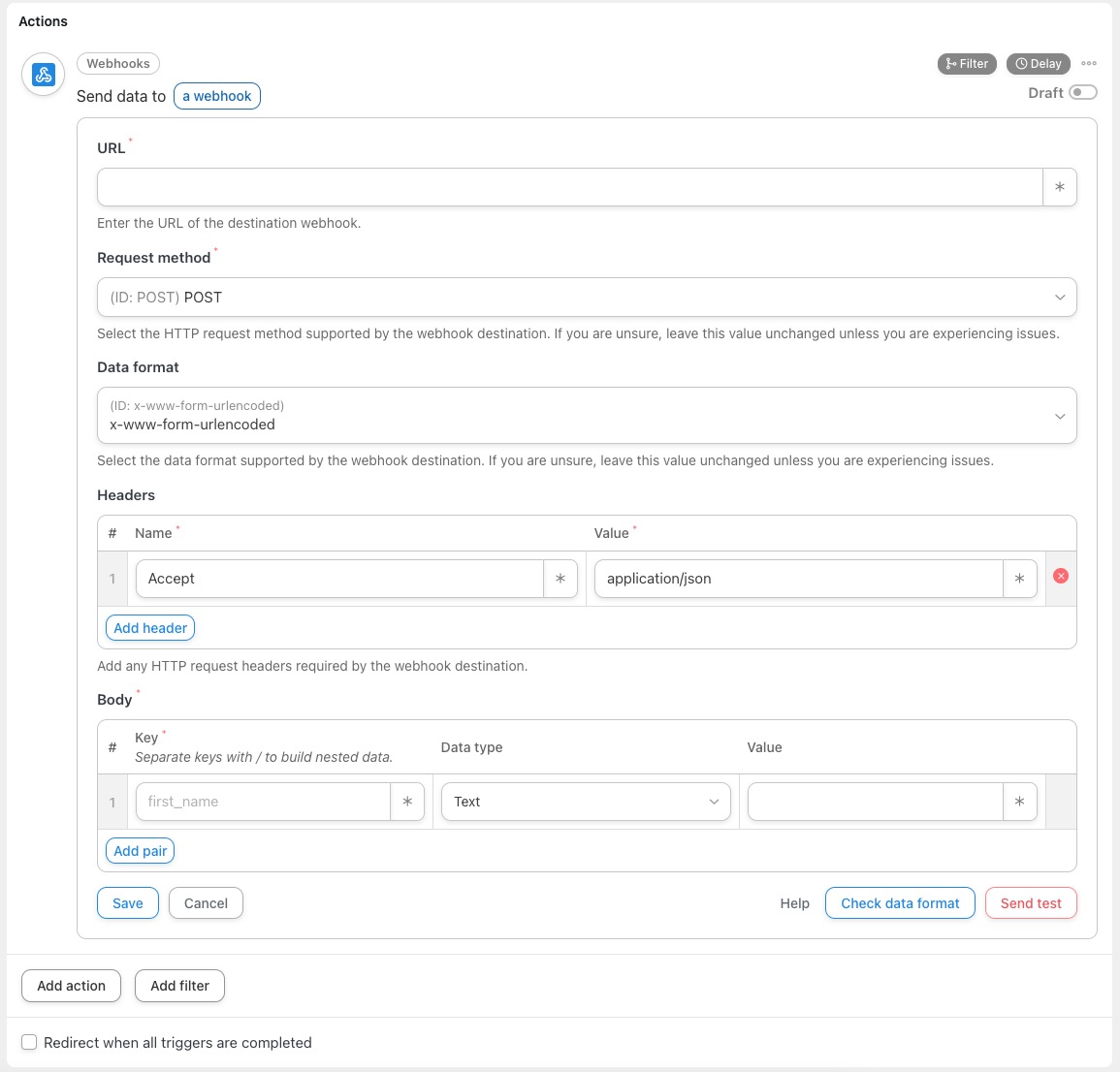The Send data to Webhook action is a powerful action that enables your WordPress site to integrate with any number of other systems and services that support receiving data via webhooks, such as IFTTT, Integromat, or another site running Uncanny Automator. (For Zapier, see Zapier Actions.)
Setting up a webhook action
- Create your new Automator recipe and add Send data to webhook as an action. You can find it under Webhooks > Send data to webhook.

- Klicken Sie in der Aktion auf das Webhook -Feld, um die Webhook-Parameter festzulegen.
- In the URL field, paste the webhook’s target URL. You will need to get this URL from the system/service you are using to receive the data.
- If you know what Request method your receiving service requires, select it from the dropdown. Otherwise, leave this as default (POST).
- If you know what Data format your receiving service requires, select it from the dropdown. Otherwise, leave this as default (x-www-form-urlencoded).
- If you know what Headers your receiving service requires, add them as Key and Value pairs. Otherwise, leave this as default.
- If you want to pass data from WordPress to your receiving service, enter match Schlüssel Und Wert Felder im Körper Abschnitt. Stellen Sie sich einen Schlüssel als Bezeichnung für den Wert vor.
- Geben Sie zunächst eine Textbezeichnung in das Feld „Schlüssel“ ein.
- Für Werte möchten Sie wahrscheinlich dynamische Daten zum Benutzer und zur WordPress-Umgebung übergeben. Klicken Sie zur Auswahl von Variablen auf das * -Symbol rechts neben dem Wert. Es werden Dropdown-Listen für allgemeine Token sowie Token angezeigt, die sich auf die Trigger im Rezept beziehen. Ein Beispiel für ein allgemeines Token ist der Benutzername, da er in jedem Rezept verwendet werden kann; ein Rezept-Token kann der Name eines Kurses sein, der mit einem Kursabschluss-Trigger verknüpft ist. Wählen Sie ein Token aus, indem Sie darauf klicken. Sie sehen dann beispielsweise „{{user_firstname}}“. Achten Sie darauf, das Token-Format nicht zu ändern.
- If you want to pass nested data from WordPress to your receiving service, enter Keys as a parent/child pair, separated by forward-slash / in the Body section. You will also have to change the Data format from x-www-form-urlencoded to JSON.
- Wenn Sie eine Vorschau Ihrer ausgehenden Daten anzeigen möchten, klicken Sie auf Datenformat prüfen.
- If you want to send a test webhook, click Send test.
- Speichern Sie die Aktion. Stellen Sie nun die Aktion von Entwurf auf Live um. Vergessen Sie nicht, auch Ihre Auslöser und das Rezept auf Live zu setzen.
And that’s it! You now have a recipe that sends a webhook from your WordPress site, based on a user’s actions.
Please note that to pass webhook data security and without issue, it’s important that your WordPress site be properly security with a valid SSL certificate.